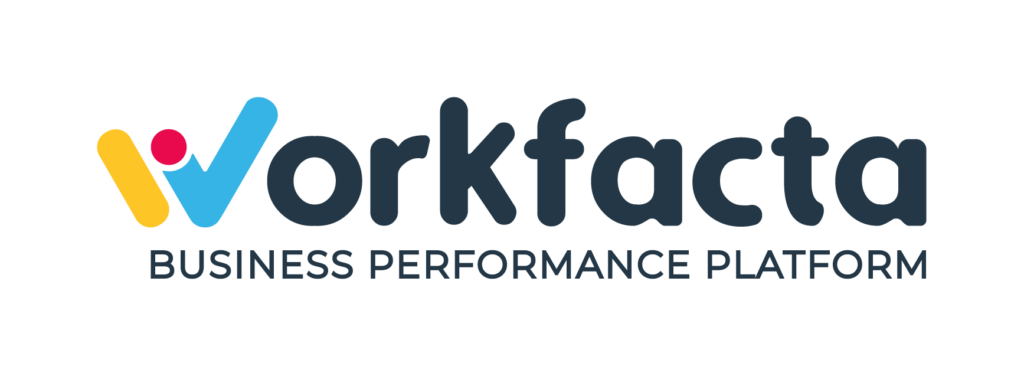
BUSINESS PERFORMANCE | STRATEGIC ALIGNMENT | TEAM ALIGNMENT | STRATEGY | PLANNING
How to Achieve Strategic Alignment for Long-Term Business Success
How to Achieve Strategic Alignment for Long-Term Business Success
 Workfacta Team
Workfacta Team
Published 04/08/2022
There are over 2.4 million operating businesses in Australia. A steady increase in business numbers helps economic growth and provides new jobs for Australians. When starting a company, it is easy to manage small teams and collaborate closely. But, as you scale and grow your business, disorganisation can ensue.
Without strong strategic alignment, business performance and reputation suffer. Luckily, there are simple and cost-effective ways to achieve strategic alignment with your teams. By working from the ground up at building alignment amongst your team members, you have a better shot at hitting company goals from which everyone benefits.
In this article, we go over what strategic alignment is and give helpful tips on how to get started.
. . .
What Is Strategic Alignment?
Strategic alignment is the pegs that hold the table up. It includes the internal and external engagement of a company and the elements that support long-term business goals. Strategic alignment is everything you use that drives the success of a company.
The pillars of strategic alignment are:
- Mission, vision, values: these give your company a clear direction.
- Skills: technical, analytical, decision-making, budgeting, etc
- Culture: values, people, leadership, diversity, equity, inclusion, etc
- Structure: organisation, systems, processes, IT, etc
That said, these pillars must be supported by strong practices, such as:
- Setting and tracking goals
- Measuring performance
- Holding people accountable
Poor alignment might look like this:
- Disorganised and misaligned teams
- Poor communication
- Chaotic work environment
On the other hand, a strong alignment plan includes excellent cross-team and intra-team communication. It develops good relationships between upper management and their employees. Strategic alignment boosts morale and productivity and drives business success.
Learn how Thomas Foods International achieved greater alignment in their Executive Team with Workfacta. Read the Case Study
To get you started on strategic alignment, follow this introductory guide to check how well your organisation is aligned.
. . .
Step 1 – Align Your Business Strategy With Your Company Brand
When you develop a strategic plan, you want to ask, “do our business strategies align with the company brand?”.
Very few understand that the company’s brand is a corporate asset: a strong brand is a guarantee made to the customers that the business will deliver on its promises. To execute these promises, the business strategy must align with the brand.
You can break this question down even further by asking:
- “What are your brand promises?”
- “How are we trying to achieve these goals?”
- “Does it align with our ultimate purpose?”
Can any of your employees answer these questions? If not, you need to focus your efforts on communicating and reinforcing these messages.
Aligning your company’s brand to the business strategy requires that the CEO down to the most recent hires of your organisation understand the company’s vision, purpose and believe in them. Next, you need to translate the business strategy into clearly defined goals. Communicate with others about reasonable targets and consider breaking them into short and long-term goals with achievable steps between.
. . .
Step 2 – Match Your Organisation Capabilities To Your Goals
With any business, you need supreme organisation support that reinforces business strategy achievements. Organisations include employees, upper management, technology, and other management systems. It incorporates how everyone (and everything) works together to support the brand and company goal. This is a critical question to ask for better team alignment and business success. Organisation capabilities will directly affect how and if you achieve long-term business goals.
Read also: How can you align your leadership teams? Poor direction results in poor outcomes and performances.
First, develop clear and concise company objectives.
Create annual goals, break them down into realistic and measurable targets that are relevant to each function or team. Don’t forget to hold teams accountable. Use framework like OKRs or SMART Goals to drive good planning disciplines.
Second, look at developing the right team structure.
Without enough employees, you won’t meet goals to put out new app developments by certain developments. Next, you could run into issues with changes in in-office employees.
Since strategic alignment includes aligning teams within departments, you need to first look at your structure. For example, you could ask the questions:
- “Do we have enough employees to carry out business goals?”
- “Are there skill gaps amongst different teams?”
- “Is there the space, time, and technology to help employees achieve company goals?”
Third, communicate regularly, consistently and often.
Regular communication within cross-teams could help you identify problematic areas and reassess growth. The COVID-19 pandemic shifted habits and changed how an organisation operates.
The pandemic created a new world of remote work. Use these opportunities to spark innovative changes rather than create more chaos.
Lastly, check that your technology is capable of supporting your business objectives:
- Do you have enough up-to-date equipment?
- Could you spend money now and improve productivity and efficiency?
Remember: improving your company’s capabilities builds a strong foundation for your strategic alignment plan.
. . .
Step 3 – Engage Your Employees In Planning Sessions
Using employee planning sessions helps you further align your team and business success. For example, if you want to achieve long-term business goals that include innovative ideas, you need a space where creativity can flow. Ensure that you use employee planning sessions to also ask for feedback, such as:
- “How do your day-to-day tasks align with business strategies?”
- “Do you feel you have autonomy within your outlined responsibilities?”
- “How do your individual and professional goals align with the companies?”
- “How do you feel the company could change or adjust short-term goals that lead to better team alignment?”
Have employees engage in the decision-making process.
This will help align strategies with teams and retain them. It drives business rapport and boosts productivity. It also improves accountability. Ultimately, the individual performance of team members affects your strategic alignment plan. Emphasise their accountability and include them in important decision-making process.
You can use software platforms to help you with responsibilities. Using a management platform sets clear expectations and ensures everyone has an outline of their responsibilities.
. . .
Final Thoughts: Use Tech To Keep Improving Your Company’s Strategic Alignment
Strategic alignment is critical for a business’s success. Managing alignment is a challenging task when you don’t have the processes and systems to automate it.
Traditionally, businesses used office productivity tools (spreadsheets, presentations, word documents) to capture information, but none of these tools give real-time or up-to-date data that can be used to align teams efficiently and rapidly to strategic changes. Fortunately, today, businesses can rely on strategic alignment software to simplify managing alignment and accountabilities within the organisation.
If you have disorganisation and poor communication between teams, you may need additional help.
We recommend using a tool like Workfacta, to drive and embed these principles effortlessly and create a culture of focus, alignment, collaboration, transparency and accountability (FACTA Principles).
Software platforms like Workfacta help you work smarter and achieve your business goals. It can create business plans, manage goals, and monitor progress. You can empower teams, hold everyone accountable, and improve efficiency.
Ready to get started? Check out Workfacta’s subscription plans for more information!


